| Content | The Rupert Neve Designs Portico II Master Bus Processor lets you enhance, reshape, and polish your sound to perfection. Whether you want to add finishing touches to your master bus, level out a stereo group, or add new life to mono sound sources, the Portico II Master Bus Processor gives you the compression, limiting, and stereo field manipulation you need. Featuring custom input and output transformers designed by Rupert Neve, the Portico II Master Bus Processor implements the same ultra-smooth Class A signal processing made famous by the 5088 console and the Portico II Channel, as well as 72V topology, which gives it enormous headroom while allowing it to integrate seamlessly with virtually any system. If you’re serious about your sound, then it’s time to ask your Sales Engineer about the Rupert Neve Designs Portico II Master Bus Processor!
Powerful and flexible compression
Both channels of the Portico II Master Bus Processor feature one of Rupert Neve Designs’ most versatile compressors to date. Whether you want to add punch to your mix or smooth out your vocal subgroup, the Portico II Master Bus Processor has the compression you need. Controls for ratio, threshold, attack, release, blend, sidechain highpass filter, limiting, and makeup gain let you dial in the perfect dynamics quickly and easily. Use the two compressors independently, or instantly link them with the push of a button. Variable Silk Red/Blue Texture controls let you add classic Neve harmonic warmth; while a blend control lets you dial in the dry signal for instant parallel processing, so you can get all of the compression you want without losing transients. In addition, the Portico II Master Bus Processor gives you a choice of either vintage-flavored feed-back or modern-sounding feed-forward compression modes.
Transparent, musical limiter that’s effortless to use
Often overlooked at first glance, the Portico II Master Bus Processor’s 1-knob limiter is a powerful, flexible, and remarkably easy-to-use tool that lets you get the most out of the Portico II Master Bus Processor’s compression section. Rupert Neve Designs’ Adaptive Release Technology gives this limiter its unique ability to grab onto fast transients, without smothering the rest of the signal. Plus, you have the option to blend compressed and dry signals together for parallel processing that maintains natural-sounding dynamics without clipping. This gracious behavior means you can set it and forget it, with the added security of knowing your masters will be free from clipping and broadcast-ready.
Sidechain inserts for creative ducking
Every dynamics processor has a sidechain circuit that examines the signal and determines how much the VCA will reduce gain — but not every unit provides access to its sidechain. In compressors without a separate sidechain input, your main input signal is, essentially, compressing itself. With compressors like the one in the RND Portico II Master Bus Processor, you can insert external processing on the sidechain — or introduce a different signal that determines the compression action on the main signal. It’s an incredibly useful feature that lets you, for instance, automatically duck a track to make space for another (very popular for that EDM mix pumping effect). Combined with the sidechain HP filter, it gives you an impressive amount of tonal versatility.
Amazing Stereo Field Editor
Although the Rupert Neve Designs Portico II Master Bus Processor functions wonderfully as a dual-mono processor, it really shines in stereo mode. That’s thanks to its unique Stereo Field Editor. The Stereo Field Editor uses advanced Mid/Side stereo manipulation techniques, allowing you to adjust your stereo bus’s width, depth, and ambience. Beyond widening your stereo image, the Portico II Master Bus Processor can actually bring center-panned instruments out in your mix. That makes the Portico II Master Bus Processor an invaluable tool for mastering, as well as defining the spread of your subgroups during mixdown.
The legend continues
Rupert Neve’s 80 Series consoles had a huge, punchy, and authoritative sound that defined the sound of ’70s rock. From London to New York to Los Angeles and beyond, top studios were installing Neve boards as fast as they could. By 1977, with the introduction of the NECAM automation system, 80 Series boards were the main component of the success formula for any recording studio with world-class aspirations. Mr. Neve’s current company, Rupert Neve Designs, continues to advance the state of the art with cutting-edge products that sound incredible and intelligently address the challenges of the digital age. With your Rupert Neve Designs Portico II Master Bus Processor from Sweetwater, the legend continues.
Rupert Neve Designs Portico II Master Bus Processor Features:
- Powerful 2-channel compressor/limiter/stereo field manipulator
- Custom input and output transformers designed by Rupert Neve
- Full compression sections for both channels, including attack, release, ratio, and threshold controls
- Sidechain inserts and highpass filters for both compressors
- Feed-back/Feed-forward switch lets you select between vintage-style and modern compression modes
- Silk Texture control with Red/Blue modes for classic Neve harmonic warmth
- Blend controls allow you to mix dry signal back into your compression, preserving transients while adding punch
- Simple and highly musical 1-knob limiter with Adaptive Release Technology allows for brickwall limiting that doesn’t distort or affect signal under the threshold
- Stereo Field Editor section includes independent level and EQ for width and depth, allowing you to dial in the perfect stereo field
| The Shelford Channel is built around Rupert Neve’s first new transformer-gain, class-A microphone preamplifier in over 40 years, a “best-of-the-classics” inductor EQ section, a tone-packed diode bridge compressor, the power of variable Silk saturation, a new dual-tap transformer output stage, and twice the operating voltage of vintage designs.
The Input Stage and Transformer Gain Mic Pre
Like Rupert’s designs from his time in Little Shelford , the Shelford Channel’s preamplifier uses a directly-coupled transformer input with gain provided by the custom transformer itself – a first in over 40 years for Rupert Neve. This new custom-designed input transformer, along with its careful integration with the surrounding class-A circuitry, is critical to the Channel’s bold and instantly recognizable character.
Conveniently, the Direct Input uses the same topology as the best-selling RNDI Active Transformer Direct Interface, providing astonishing clarity for high-Z instrument signals, with unparalleled low-frequency response and an incredibly smooth high end.
What is Silk?
The Silk & Texture circuit on the Shelford Channel allows you to fine-tune the amount (and type) of harmonic content in the output stage. This means your signal can be adjusted from quite transparent to settings that produce nearly 10x the amount of sonic color as Rupert’s vintage modules – and in two very unique modes. No matter what sound you’re looking for, Silk can help get you there.
The Dual Tap Transformer Output
Complementing the Silk circuit is the custom-designed output transformer, which uses Rupert Neve Designs’ unique dual-tap output topology. This offers both full-headroom (+26dBu) and -6dB outputs, allowing the engineer to drive the unit fully into classic transformer saturation without clipping converters and other devices later in the chain.
The “Best-Of” EQ
The Shelford Channel’s 3-band, custom-tapped inductor EQ was inspired by our favorite elements of Rupert’s vintage EQ designs. The low frequency band is designed to produce a creamy, resonant bass response similar to a vintage 1064 – but unlike the vintage modules, the LF band on the Shelford Channel can be used as either a shelf or a peak filter, adding punch, dimension, and control to your low end.
The midrange band is based on that of the 1073, ideal for sweetening vocals and instruments while bringing them forward in a mix, and its proportional “Q” response makes it well-suited for minimizing problematic frequencies. The high frequency band is a hybrid vintage / modern design, blending inductor circuitry with capacitor-based topologies to achieve vintage tones with enhanced control, with the shelf / peak corner switchable between 8K or 16K.
The Diode Bridge Compressor
Like the Inductor EQ and Transformer Gain microphone preamp, the Diode Bridge Compressor in the Shelford Channel is based on the same topologies found in Rupert’s vintage designs – but refined & adapted for the modern engineer.
What is diode bridge compression? Where the VCA compressor found in the Master Buss Processor provides unmatched clarity, the weighty, harmonically rich tonality of diode bridge compression can be essential in pushing key sources like vocals, electric guitars, bass and drums to the forefront of a mix.
By understanding the limitations of vintage units like the legendary 2254, painstaking effort was taken to reproduce the unique tone of these classics while improving the noise floor & accuracy, expanding inflexible time constants, adding full wave sidechain detection for improved dynamic response, and widening the range of threshold and ratio controls.
Delivering the powerful sound of these iconic designs with enhanced flexibility for the modern age, the Shelford’s diode bridge compressor is a dynamic tool equipped to make a statement on virtually any mix or track.
MIC PREAMP
INPUT IMPEDANCE
2200 Ohm
MAXIMUM INPUT
- +21.5 dBu from 150 Hz to 22 kHz
- +8 dBu 20 Hz to 22 kHz
NOISE
- Un-weighted, 22 Hz-22 kHz, source impedance 150 Ohm balanced.
- Main Out @ unity gain -100.9 dBu
- -6 dB Out @ unity gain -106.6 dBu
- +30 dB gain (Main Out) -91.37 dBu
- +66 dB Gain (Main Out) -64.1 dBu
- Equivalent Input Noise -121.37 dBu
FREQUENCY RESPONSE
+/-0.25 dB from 17 Hz to 45 kHz
DIRECT INPUT
MAXIMUM INPUT
8 dBu @ 20 Hz to 120 kHz
NOISE (MAIN OUTPUT)
-100 dBu (22 Hz to 22 kHz)
LINE INPUT
MAXIMUM INPUT LEVEL
+30.5 dBu 20 Hz to 30 kHz
TOTAL HARMONIC DISTORTION AND NOISE
- @ 1 kHz, +20 dBu output level, no load: Better than 0.002%
- @ 20 Hz, +20 dBu output level, no load: 0.05% Typical (2nd and 3rd harmonic)
NOISE (MAIN OUTPUT)
Un-weighted, 22 Hz - 22 kHz, source impedance 40 Ohm balanced, no load.
-101.1 dBu
FREQUENCY RESPONSE
+/- 0.25 dBu from less than 10 Hz to 110 kHz
-0.32 dB @ 120 kHz
MAXIMUM OUTPUT LEVEL
+26 dBu @ 16 Hz to 20 kHz
TOTAL HARMONIC DISTORTION AND NOISE WITH SILK ENGAGED
RED
- MIN TEXTURE @ 100 Hz, +20 dBu input level, no load: 0.0131%, mostly 3rd harmonic (typical)
- MAX TEXTURE @ 100 Hz, +20 dBu input level, no load: 1.66%, mostly 2rd harmonic (typical)
BLUE
- MIN TEXTURE @ 100Hz, +20 dBu input level, no load: 0.0079%, mostly 3rd harmonic (typical)
- MAX TEXTURE @ 100Hz, +20 dBu input level, no load: 0.941%, mostly 2rd harmonic (typical)
HIGH PASS FILTER
- Continuously variable swept frequency from 20 Hz to 250 Hz.
- Slope: 12 dB/Octave
EQ NOISE
Un-weighted, 22 Hz-22 kHz: -92 dBu
SIGNAL PRESENT
Illuminates GREEN when input stage signal level reaches -20 dBu
OVERLOAD INDICATOR
Illuminates RED when input stage signal level reaches -23 dBu
DIODE BRIDGE COMPRESSOR
- NOISE (BW 22 Hz – 22 kHz)
- 0 dB Makeup Gain: -84.5 dBu
- +20 dB Makeup Gain: -64.2 dBu
TIME CONSTANTS
- Measurements taken represent full range achievable between 1.5:1 Ratio and 8:1 Ratio setting.
- 0 dBu I/P 1kHz Burst Tone used for all recorded measurements.
- Fast (TC1): Attack 180µS — 1.8mS // Release 100mS – 150mS
- MedFast (TC2): Attack 750µS – 5.25mS // Release 160mS – 250mS
- Med (TC3): 2.7mS – 18mS // Release 350mS – 525mS
- MedSlow (TC4): 4.6mS – 38mS // Release 600mS – 1 S
- Slow (TC5): 11mS – 72.5mS // Release 800mS – 1.25 S
- Auto (TC6): 5.75mS – 35.5mS // Release T1 400mS – 850mS, T2 TBD
- “Fast” Mode Multiplier: Modifies aforementioned TC’s by 70% of original value
PRODUCT DIMENSIONS
19” (48.3 cm) x 10.5” (26.7 cm) x 1.75” (4.4 cm) | Originally developed for the dynamics circuit of the acclaimed Shelford Channel, the 535 Diode Bridge Compressor captures the soul of Rupert Neve’s original 2254 compressor while providing modern updates including advanced timing control, significantly lower noise, fully stepped controls throughout, and internal parallel processing capabilities.
What is diode bridge compression?
Where the VCA compressor found in the Master Buss Processor provides unmatched clarity, the weighty, harmonically rich tonality of diode bridge compression can be essential in pushing key sources like vocals, electric guitars, bass and drums to the forefront of a mix.
By understanding the limitations of vintage units like the legendary 2254, painstaking effort was taken to reproduce the unique tone of these classics while improving the noise floor & accuracy, expanding inflexible time constants, adding full wave sidechain detection for improved dynamic response, and widening the range of threshold and ratio controls.
Delivering the powerful sound of these iconic designs with enhanced flexibility for the modern age, the 535 Diode Bridge Compressor is a dynamic tool equipped to make a bold statement on virtually any mix or track.
LINE INPUT TO LINE OUTPUT
- Compressor Bypassed.
- Z source = 40 Ohm Balanced
INPUT IMPEDANCE
10K Ohm
OUTPUT IMPEDANCE
40 Ohm
MAXIMUM INPUT LEVEL
+23.5 dBu
MAXIMUM OUTPUT LEVEL
+23.5 dBu
NOISE
- 22 Hz - 22 kHz BW.
- -101 dBu
FREQUENCY RESPONSE
- 10 Hz - 120 kHz, 30ft Output XLR Cable.
- +/- 0.25 dB
THD+N
- @ 1 kHz @ Maximum Output Level, 22 Hz - 22 kHz BW.
- 0.001%
| Whether you’re tracking, mixing, or just listening to music, your headphone amplifier is as important to the final sound quality as your headphones – yet the world is full of headphone amps with compromised sonics, headroom, and power. To address these shortcomings, Rupert and his team at Rupert Neve Designs developed the RNHP.
Based on the headphone output circuit in the 5060 Centerpiece Desktop Mixer, the RNHP is a dedicated 24V reference-quality headphone amplifier with +4dBu balanced line, unbalanced RCA and 3.5mm (1/8”) inputs – each specifically calibrated for optimum level and impedance – and housed in a rugged, VESA-mountable steel chassis.
Dedicated vs Integrated Amplifiers
For much equipment, the headphone output is an afterthought. Most products with integrated headphone amps have large feature sets, small footprints, and relatively low price points. This leads to compromised power and audio quality of the headphone amplifier itself, which can lead to a number of issues in real world usage such as low headroom, unreliable performance, and a lack of focus.
The RNHP was made to accomplish one simple purpose: making any headphones sound their best. As a dedicated design, the RNHP is tailored to deliver extremely high quality, powerful amplification, with precise calibration for any source input. This exceptional level of quality can be the difference that inspires an artist to give their best performance, lets an engineer make better choices in mic and placement, gives a mix engineer reliable translation of EQ and dynamics adjustments, or lets a music listener appreciate the full depth and detail of a recording.
MAXIMUM INPUT LEVELS
- “A” XLR I/P: +22.8 dBu @ 1 kHz
- “B” RCA I/P: +14.7 dBu @ 1 kHz,
- “C” 3.5mm I/P: +3.3 dBu @ 1 kHz
OUTPUT POWER
- As measured with typical headphones, Z=44 Ohm: 3.617 VAC RMS @ 1 kHz = 300mW RMS.
- 16 Ohm typical Load: 1.933 VAC RMS @ 1 kHz = 230mW RMS
- 150 Ohm typical Load: 5.108 VAC RMS @ 1 kHz = 175mW RMS
OUTPUT IMPEDANCE
.08 Ohm @ 1 kHz, 16-150 Ohm load, 0 dBu input
FREQUENCY RESPONSE
+/- .2 dB from 10 Hz to 120 kHz
NOISE
- Measured with typical headphones, Z = 44 Ohm, BW 22 Hz - 22 kHz.
- “A” XLR Input: -101.9 dBV,
- “B” RCA Input: -100.9 dBV
- “C” 3.5mm Input: -88.8 dBV
DIMENSIONS
6.5” wide x 4.6” deep and 1.9” tall
POWER SUPPLY REQUIREMENTS
24VDC @ 0.25Amp (6 watt) minimum. Use with supplied power adapter, as this has been carefully selected for best output power and noise performance. May be used with a properly configured 24V battery as well. |
NAIM UNITI NOVA ALL-IN-ONE MUSIC PLAYER
Uniti Nova is proof that an all-in-one player can deliver audiophile quality. Whichever source you choose, your music will be transformed into a stunning sonic experience. The reference player in the range, Uniti Nova has been configured to offer the very best solution that we can implement in a single-box, compact enclosure. All the available space has been used to provide 80 watts per channel of Class A/B amplification capable of driving the most demanding loudspeakers – detail and depth you’ll hear in every note, riff and chorus.
Uniti Nova really lives up to its name with some outstanding new technology which really sets it apart from the rest of the range. Its circuitry features the highest quality discrete components, a massive toroidal transformer for an exceptional sound, superior isolation, Naim's new signature volume control, more inputs than you can shake a stick at and an 80 watt power per channel power amplifier to boot. Uniti Nova is as good as an all-in-one player can get.
Specifications
Connectivity
Audio Inputs
2 x Optical TOSLink (up to 24bit/96kHz)
2 x Coaxial RCA (up to 24bit/192kHz, DoP 64Fs)
1 x BNC (up to 192kHz, DoP 62Fs)
1 x HDMI ARC
2 x RCA
2 x 5-pin DIN
2 x USB Type A socket (front and rear)
SD Card
Audio Outputs
1 x Stereo power amplifier
1 x RCA sub/pre output
1 x 3.5mm headphone jack
Amplifier Output: 80 W per channel into 8 ohm
Dimensions (HWD): 95mm x 432mm x 265mm
Weight: 13 kg
| In addition to the 100% analog tape emulation circuitry – great for bringing out 3rd-order harmonics – the 542 incorporates a soft-clip circuit that tames the harshest sources and enhances 2nd-order harmonics, variable Silk Red & Blue for an infinite variety of transformer tones, and a blend control to dial in in the perfect amount of saturation.
Transformers Imitating Tape
Unlike digital emulations, the “True Tape” drive circuit works by feeding a custom-designed interstage transformer acting as a “record head”, which in turn is coupled to a correctly-equalized replay amplifier. As the voltage rises on the “record head”, saturation increases, and a soft clip circuit engages at higher levels to round off peak transients. The sound of the tape circuit can be further modified with selectable 15 / 30 IPS modes and a pre/post-tape blend control.
What is Silk?
In addition to the tape circuit, the continuously variable Texture control with Silk Red and Silk Blue modes provides a whole other level of control over the harmonic density and tonality of your tracks & mixes. The Silk Red mode accentuates transformer saturation in the high and high-mid frequencies to amplify the vibrant midrange harmonics associated with Rupert’s vintage equipment, while Silk Blue accentuates saturation of the lows and low-mids to add thickness and weight to any source – especially useful for “thin-sounding” tracks or mixes. Unlike EQ, these Silk & Texture controls saturate the output transformers, and add highly musical harmonics to the source material according to the amount of Texture applied.
Drive the 542 hard, choose your Silk flavor, and crank the Texture knob for a rich, saturated, vintage vibe – or disengage Silk entirely for a more purist, hi-fi tape effect. The choice is yours.
LINE AMP NOISE
- Measurements with tape circuit disengaged. Measured at Main Output, un-weighted, 20 Hz - 22 kHz, Input Terminated 40 Ohm.
- Unity Gain: Better than -100 dBV
FREQUENCY RESPONSE
- Measured at +10 dBu, trim at unity.
- Main Output: +/- 0.25 dB from 5 Hz to 60 kHz, -2 dB @ 120 kHz
MAXIMUM OUTPUT LEVEL
23.25 dBu
TOTAL HARMONIC DISTORTION AND NOISE
- @ 1 kHz, +20 dBu output level: Better than 0.002%
- @ 20 Hz, +20 dBu output level: 0.07% Typical (2nd and 3rd harmonic)
TAPE FX SPECIFICATIONS
NOISE
- Measured at Main Output, un-weighted, 20 Hz - 22 kHz, Input Terminated 40 Ohm.
- Saturation @ minimum: Better than -100 dBu
- Saturation @ maximum: Better than -100 dBu
FREQUENCY RESPONSE
- 15 IPS, Input @ -0 dBu: -3 dBu @ 28 kHz
- Saturation @ minimum: 0 dBu @ 10 Hz
- +5 dBu Peak @ 60 Hz Saturation @ maximum: -3 dBu @ 20 kHz
- -3 dBu @ 12.5 Hz
- +2.4 dBu Peak @ 60 Hz
- 30 IPS, Input @ -0 dBu: -3 dBu @ 120 kHz
- Saturation @ minimum: -3 dBu @ 10 Hz, +3.15 dBu Peak @ 125 Hz
- Saturation @ maximum: -3 dBu @ 100 kHz
- -3 dBu @ 12.5 Hz
- +1.3 dBu Peak @ 110 Hz
TOTAL HARMONIC DISTORTION AND NOISE
15 IPS
- Input @ -0 dBu: 0.4% @ 3 kHz to 1% @ 175 Hz typical Saturation @ minimum: Greater than 1% below 175 Hz typical
- Saturation @ maximum: 1% at 6 kHz typical, 0.3% @ 1 kHz to 3% @ 50 Hz typical
30 IPS
- Input @ -0 dBu: 1% at 1 kHz typical
- Saturation @ minimum: 0.6% @ 400 Hz to 5% @ 20 Hz typical
- Saturation @ maximum: 1.5% @ 20 kHz to 0.4% @ 1 kHz typical, 0.4% @ 1 kHz to 2% @ 50 Hz typical
POWER REQUIREMENTS
Supplied by 500 series rack with 110-125 mA @ +/- 16V DC |



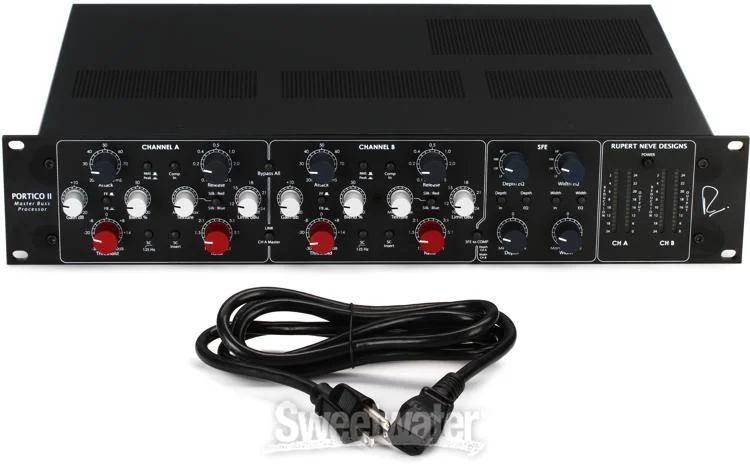


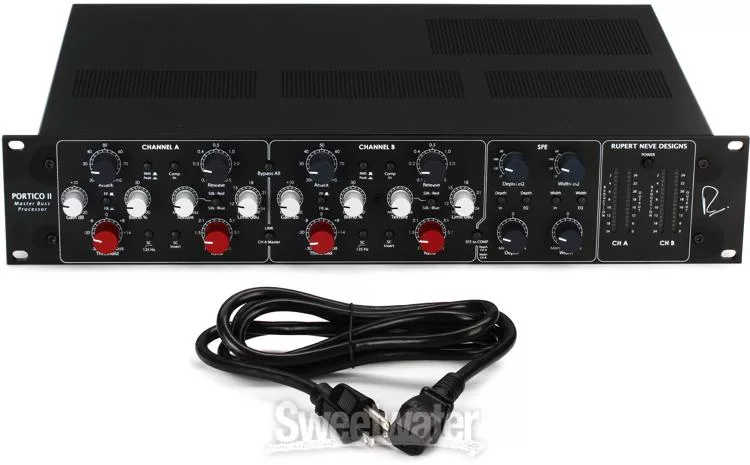








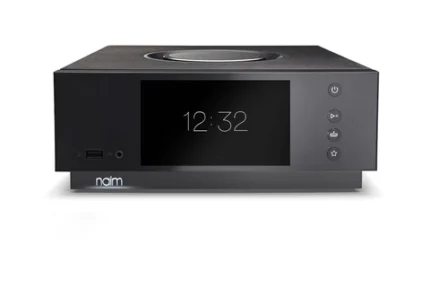
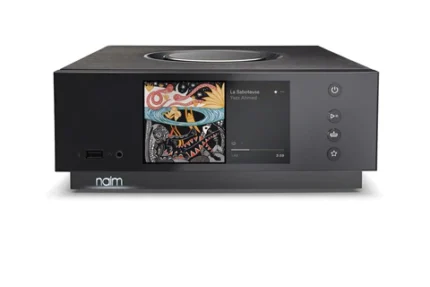
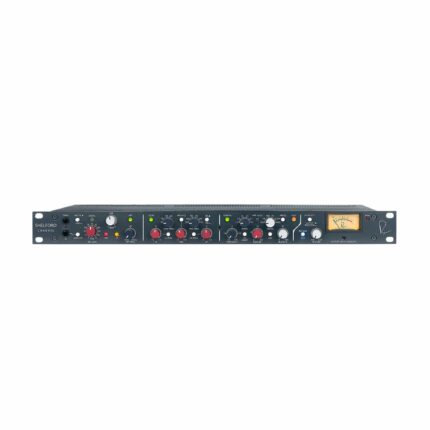
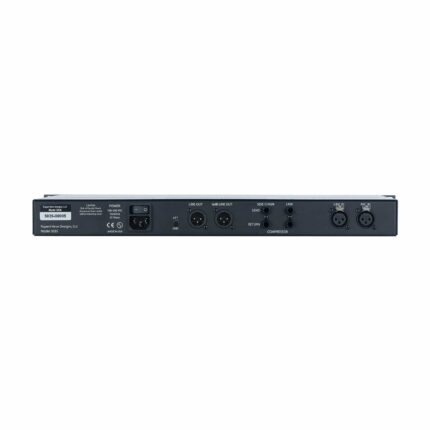






Reviews
There are no reviews yet.